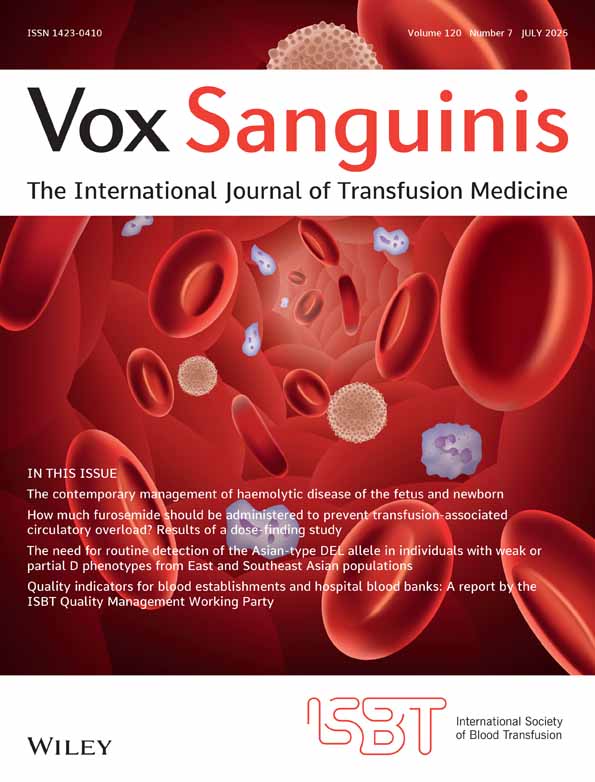Efficiency of Donor Screening for Human Parvovirus B19 by the Receptor-Mediated Hemagglutination Assay Method
Abstract
Background and Objectives: Mass screening for parvovirus B19 (B19) by receptor-mediated hemagglutination assay (RHA) may be inadequate to eliminate the virus from plasma pools. We characterized B19 carriers detected in blood donor screening by RHA to explain why some carriers were not detected by RHA. Materials and Methods: Donor plasma was screened for B19 by RHA, B19 DNA by nested polymerase chain reaction (PCR) assay, and anti-B19 by enzyme immunoassay. Results: B19 DNA-positive specimens (n = 73) screened from 456,665 donors were divided into group A (n = 41) with high DNA and high RHA titers, group B (n = 16) with low DNA and low RHA titers, and group C (n = 16) RHA-negative. Most (37/41) of the group A samples were without anti-B19, while most (15/16) of the group B samples were positive for anti-B19. Group C specimens were screened by PCR from 3,042 random RHA-negative specimens. Analysis of samples from early infections revealed that the viremic period, corresponding to group A, lasted only 8-10 days after infection. The RHA reactivity fell rapidly with the appearance of anti-B19 and disappeared 28-30 days after infection, thus corresponding to group B. The RHA reactions of group B specimens were often unstable, probably because of the formation of immune complexes. The B19 DNA-positive, RHA-negative state lasted for several months, which corresponded to group C. Conclusion: Only group A specimens are reliably eliminated in donor screening by RHA. Therefore, although donors with high B19 DNA could be screened out by testing for B19 by the RHA, most B19 carriers, with low B19 DNA and RHA-negative, will not be eliminated.




